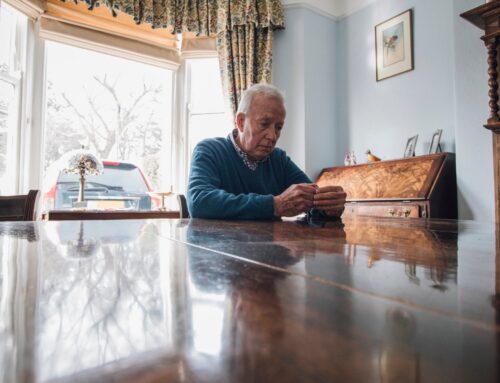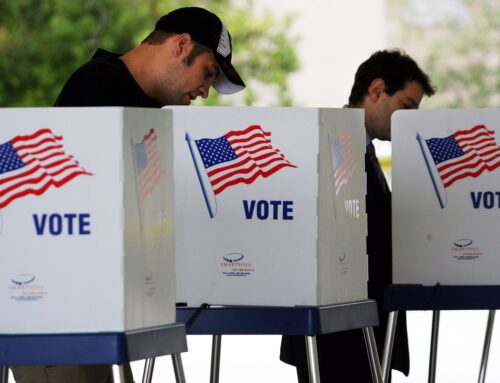Herald-Leader Business columnist recently interviewed UK Gerontologist Graham Rowles.
Here’s an edited version of the Question and Answer Martin had with Rowles discussing the growing number of seniors, retirement and seniors in the workforce.
Q: You reach this “third age” as you have identified it and suddenly find yourself waking up one day with nothing to do. That can’t be healthy.
A: It does come as a shock. Preparation is the key. Not just financial, but social, as well. Some studies of centenarians, people who make it to 100, have shown that one of the strongest traits of these people is future orientation; a 101-year-old, for example, who is talking about what they’re going to be doing two years or three years down the line.
Experts suggest that it’s a good idea not to retire at the same time as your spouse. So, the first to retire gets a chance to adjust and to frame their life and then is ready for the second one to retire. If both retire together, you have all the tensions and stresses of two people trying to adjust to this status. I think what’s going to happen as we evolve in our society and as the “third age” becomes more fully recognized, is that we’re going to be thinking of that third age as a productive phase of life.
Q: Is it fair to say that our society is not yet prepared for all of these working generations, which are very different in some very fundamental ways, to find ways to continue to work together?
A: I think we’re in that process. That’s why it’s an exciting time. In 2007, the World Health Organization did a survey involving 33 cities across the world. That included New York City and Portland, Oregon. They produced a checklist that could be used by any city to look at how their community could become age-friendly. And I don’t mean just older people, I mean younger people, as well.
Many of the communities that we live in are age-hostile. It’s very difficult to deal with them. Now, what’s exciting is that this movement has moved worldwide and has come to Kentucky. In fact, Bowling Green is the first city in the southern United States that has received World Health Organization designation as an age-friendly community. There are initiatives currently in Lexington and Berea.
The State Institute on Aging in its most recent report has suggested that Kentucky try to declare itself an age-friendly state as a whole. So, there’s a movement to start looking at how our communities serve everybody because a community that’s friendly and accessible to an older person is friendly and accessible to a woman with a small child in a stroller, for example. What we’re going to see is a sort of societal transformation over the next couple of generations as those “third agers” begin to define in a completely different way what it is to be “old.”
Q: Many with parents in their 90s are noticing that digital technology is making quite a difference in mental and intellectual acuity. Now, the whole world is there with all this information to keep the mind active. Are you seeing that happen?
A: Yes. There’s currently research going on at UK in the College of Social Work that is looking at the effect of digital media in terms not only of people’s well-being, but whether it is a compensation for loneliness. And some of the preliminary results suggest that as each generation becomes more and more involved with using this kind of communication the nature of relationships among people is changing.
The big question right now is: is the relationship you have with people on Facebook or on the internet the equivalent of the relationship you have with your neighbor? Because you can’t hug someone on the internet, but you can hug your neighbor. And what the research in gerontology shows is that, in fact, as people get older, they tend to focus on fewer relationships and have more emotional depth in those relationships.
So, the big question right now is: while social media is expanding the world in terms of number of friends and interactions with friends, is it providing the quality of relationship that it appears that older people increasingly need as they grow older? And the answer to that question is, we don’t know
Digital media, communication with families, robot maids, all of those kinds of things are allowing more people to stay at home longer than they would have before. But the big question is, if we do this and if we rely more and more on technology to enable people to remain at home, what is that doing for social relationships and is it providing justification for families not to visit mom or grandma because they can visit her through the media?
Q: In the next 10 years or so, millennials, those born between the early 1980s and early 2000s, will account for 70 percent of the global workforce – roughly equal in number to the boomer generation today. Were we today talking about their retirement years, would the issues be significantly different or roughly the same?
A: I think they’d be significantly different. Who could have predicted in 1935, when life expectancy was 62 and Social Security was linked to 65 because not that many people would live to that point, that now Social Security is going up to 67 and people are living another 18 years.
Each generation ages differently because of a couple of reasons: one, there is strong evidence that each generation is healthier than the previous generation. They have lower rates of disability than the one previously. But they also live in a different world.
For example, I was not raised with cellphones and I remember the color TV coming in and typing my doctoral dissertation on a typewriter with five carbon copies. That is inconceivable to my son who was working with computers in grade school.
One of the things we have to do as gerontologists and as a society is to try and be creative and imagine into the future. Go back 50 years and think of what the world was like. Think how far we’ve come. So now, go forward 50 years. My goodness. You can hardly imagine it.
Q: Is there a message to employers today about baby boomers who are still willing and able to work and to be engaged?
A: Absolutely. The message to employers, which is loud and clear and very well-documented, is that older workers, contrary to what we imagine, are actually more reliable workers. They have lower rates of absenteeism. They don’t work quite so fast in terms of reacting to stuff, but they don’t make mistakes and so in fact are kind of ideal employees. And there are a bunch of initiatives going on throughout the country getting older adults involved back in the workforce. The problem is that employers have an image of older adults that basically they’re decrepit and frail and so on. This relates to a serious problem in our society: ageism. The workforce is one of the key places where ageism, discrimination against older adults or people on the basis of age, is occurring and there needs to be a change in that.
Tom Martin’s Q&A appears every two weeks in the Herald-Leader’s Business Monday section. This is an edited version of the interview. To listen to the interview, find the podcast on Kentucky.com. The interview also will air on WEKU-88.9 FM on Mondays at 7:35 a.m. during Morning Edition and at 5:45 p.m. during All Things Considered.





